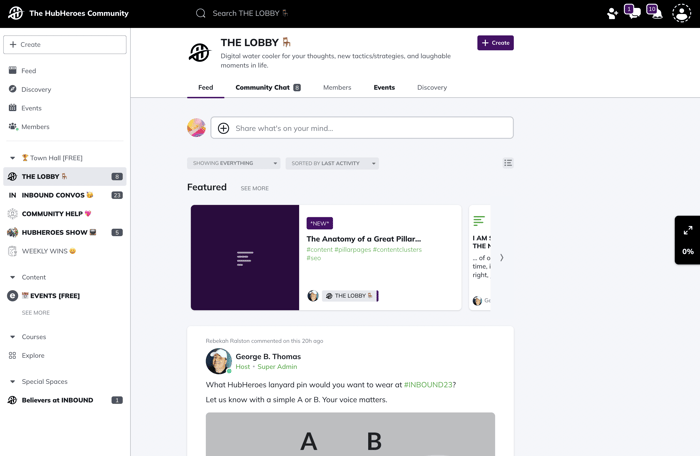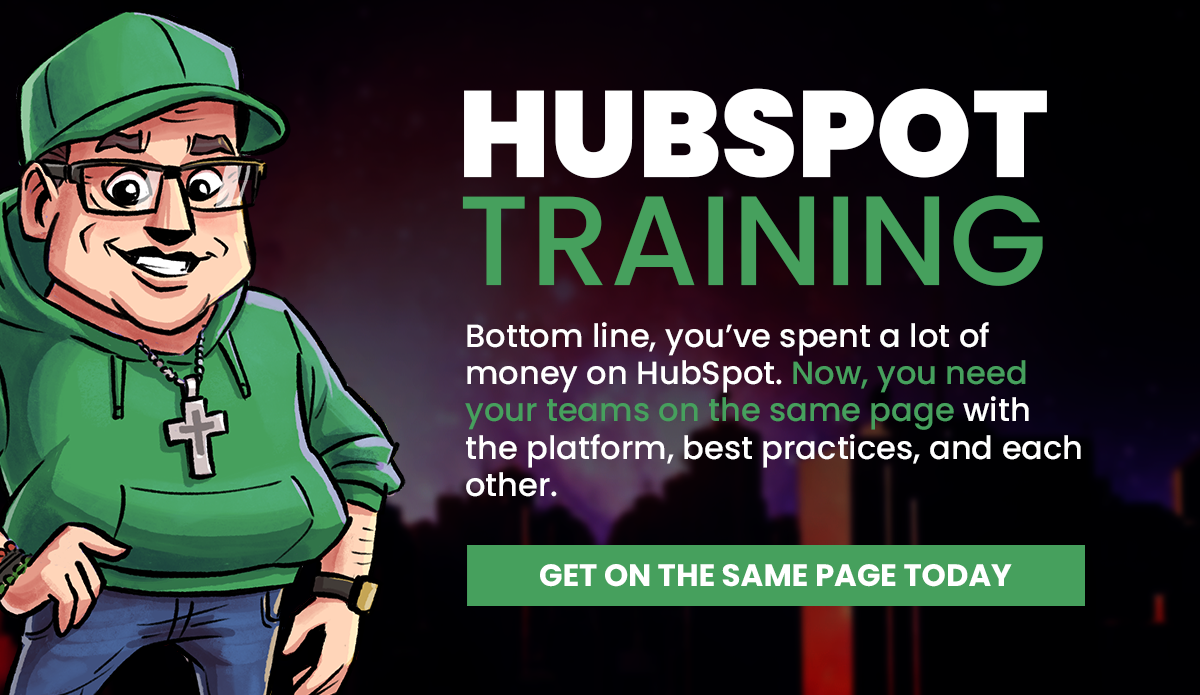4 min read
What Jorge learned: Microsoft Dynamics integrations, newsletters, and community
 Jorge Fuentes
Jun 21, 2023 10:58:46 AM
Jorge Fuentes
Jun 21, 2023 10:58:46 AM
Rather listen to this post?
I can't believe it's already been 90 days since I joined George as a HubHero, serving all of you incredible HubSpotting humans out there, so they can achieve their biggest goals. But it has been and I'm back with a second installment of a few of my favorite learnings from recent history — both technical and soft skills — that I think all of you will find helpful.
And if you missed the first installment of What Jorge Learned, check it out! I had so much fun with that one, and I shared a ton of great insights (both HubSpot and soft skills-related) in my first couple of months on the team!
🔎 Related: 6 HubSpot and human lessons I've learned in my first 60 days
They include the importance of HubSpot audits, the power of incredible email copy, how mind-blowing self-attribution can really be, the rewarding nature of client relationships (and what it takes to nurture them), and a lot more.
OK, let's jump right in and get our learning on ...
Microsoft Dynamics to HubSpot CRM migrations
One of the most popular CRM-to-CRM integrations that happen within the HubSpot ecosystem is the Microsoft Dynamics to HubSpot Sales Hub CRM integration. I would say it is only second to the Salesforce Integration with HubSpot.
🔎 Related: Why go HubSpot Sales Hub? (HubHeroes podcast)
Although there have been many changes made recently to make the data syncing between Microsoft Dynamics and HubSpot much easier, we've found that there are still a lot of companies using "middleman" apps to sync data between the two systems.
While relying on third parties may have been a smart move in the past, given the nuances of the data syncing in the migration, it's not exactly an ideal solution anymore. So, if this is something you're looking at doing, I'd urge you to look into how HubSpot has made it easier to do a direct migration between the two systems.
The way George explained breaking old ways of thinking to me when we were talking about this was very helpful. He said that there are times you need to enable your brain to think systematically (reducing the number of hurdles in a process), so you can logically and confidently integrate systems without running into a lot of issues.
🔎 Related: How to set big goals you'll actually keep (HubHeroes podcast)
It's like those old, tried and true sayings — "less is more," "the easier, the better," and "work smarter, not harder." Sometimes we can accidentally make processes more complex than they need to be. Also, it's easy to forget that platforms like HubSpot are always working tirelessly to make their platform more seamless and easy to use every single day. So what may not have been possible yesterday may be possible today.
Compelling, great looking newsletters for the user experience
OK, last time, we talked about the importance of great email copy and how humanizing your approach to email can make a huge difference in the results you see. However, I want to come back to email one more time because simply having great copy isn't enough.
If your emails and your newsletters don't have a user-friendly design, your emails will fail. If your emails and your newsletters don't follow a logical structure, your emails will fail.
🔎 Related: Email marketing strategy 101 with HubSpot (HubHeroes podcast)
Think about how you should be approaching your other published content, right? Like blogs, for instance — you shouldn't have massive, word-wall paragraphs; use bulleted lists and images to break up content; include headings and subheadings to make it easy to understand what your content is about; and so on.

That way your content isn't a pain in the butt to read!
If you want to make your emails and newsletters a dream to read, here are a few of our favorite tips for formatting!
- Bookend your newsletters with clear intro and outro copy to humanize your content and provide any context or themes you want to introduce that ties all the content together.
- Follow that with links to relevant updates, blog articles, and other content resources or insights.
- Include clear, clickable CTAs, but not too many. You want to make it easy for your audience to see what their next steps are, but you don't want to confuse them with too many — be smart.
- Give your audience multiple subscription options, so they can "manage their subscription" rather than "unsubscribe" entirely from your communications. For example, maybe they don't want marketing updates, but they still want your newsletter, so make that an option!
Seriously, these little tricks with email newsletter structure and setup will go a long way toward helping you see higher engagement.
The value of community (and bringing humans together) can't be overstated
We recently launched the Alpha version of the online HubHeroes community — check it out if you haven't already! — and we also held our first community-exclusive workshop on buyer personas.

This experience has been absolutely amazing. You wouldn’t believe the added value you get (and can also give) in a community of like-minded people who are excited to learn with each other. By leveraging these spaces of shared learning, and networking, I have come to realize how important it is to 1) get involved 2) engage 4) learn and 3) network.
Finally, education only matters if you apply what you're learning
In the last installment, I talked about how important and empowering it is to work for someone like George who places such a high value on education — and then backing that up by making it easy for those who work for him to improve themselves through learning by leading by example, creating the space and time for learning, and more.
🔎 Related: Business owners, it's time to make employee education a priority
I think that this is a fundamental part of growing as a professional (especially in the marketing industry). This is also why the HubHeroes focus on education is one of my favorite reasons for which I enjoy working with George. But there's a catch to education that we must all keep in mind.
It doesn't matter how much learning you do — whether that's through HubSpot certifications, listening to podcasts, attending events, or reading books — if you're not then taking what you learn and then adjusting your approaches, strategies, best practices, and frameworks, that learning will not serve you in any way.
🔎 Related: Ultimate HubSpot Academy certifications guide (by role + experience)
The lessons you learn will not help you achieve better results (in your work, in your life, or your career), if they stay in your head, gathering dust. You need to apply what you learn. You need to take a look at what you're doing now and make commitments to change based on new knowledge — even if you're only making baby steps at first.
So, after getting 13 certifications during HubSpot’s World Certification Week this past May, the best thing I can do is do my best to revamp the way I help our current clients. I'm so excited to see how what I've learned can help us better support the HubSpot humans we're lucky enough to call clients.


